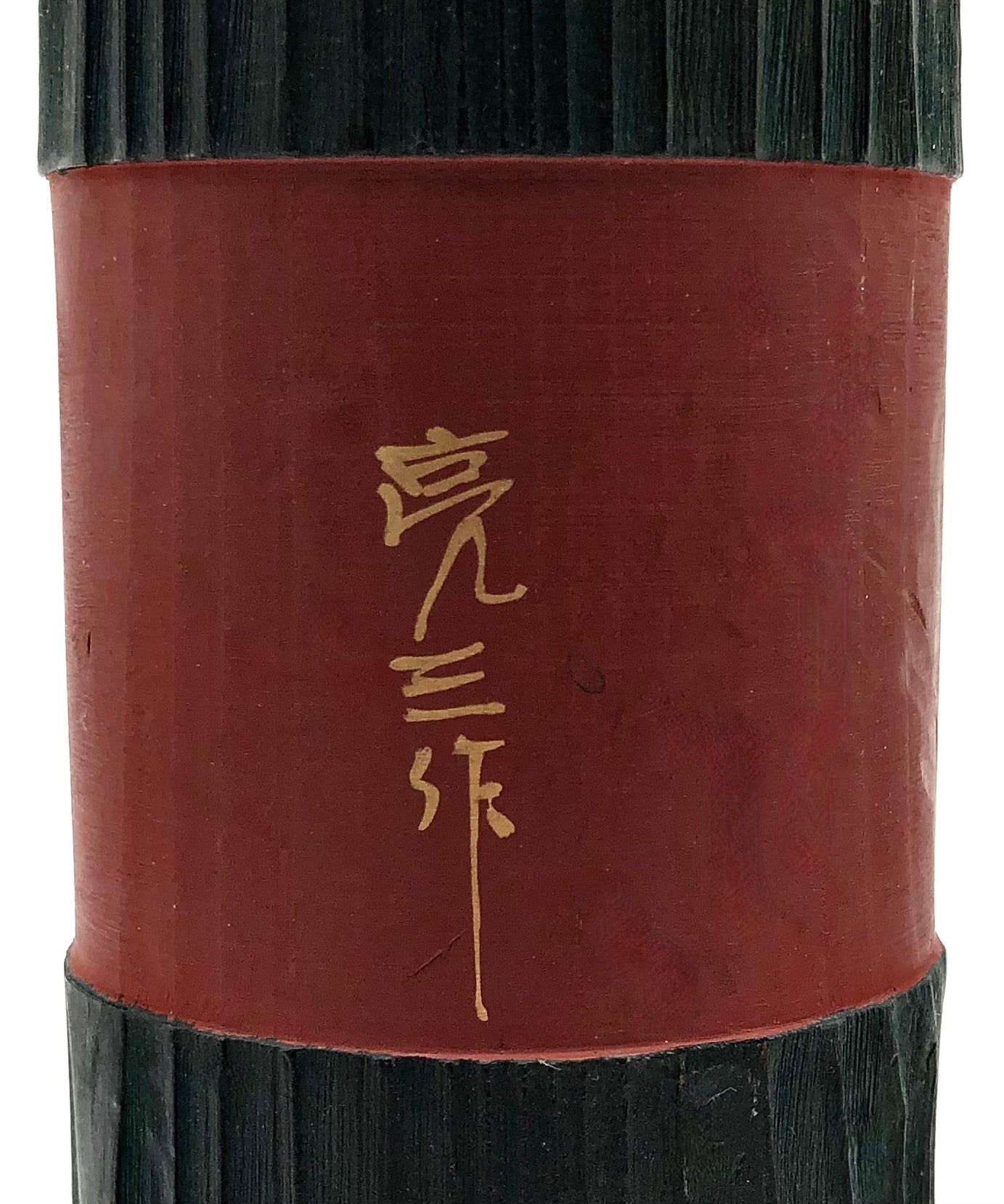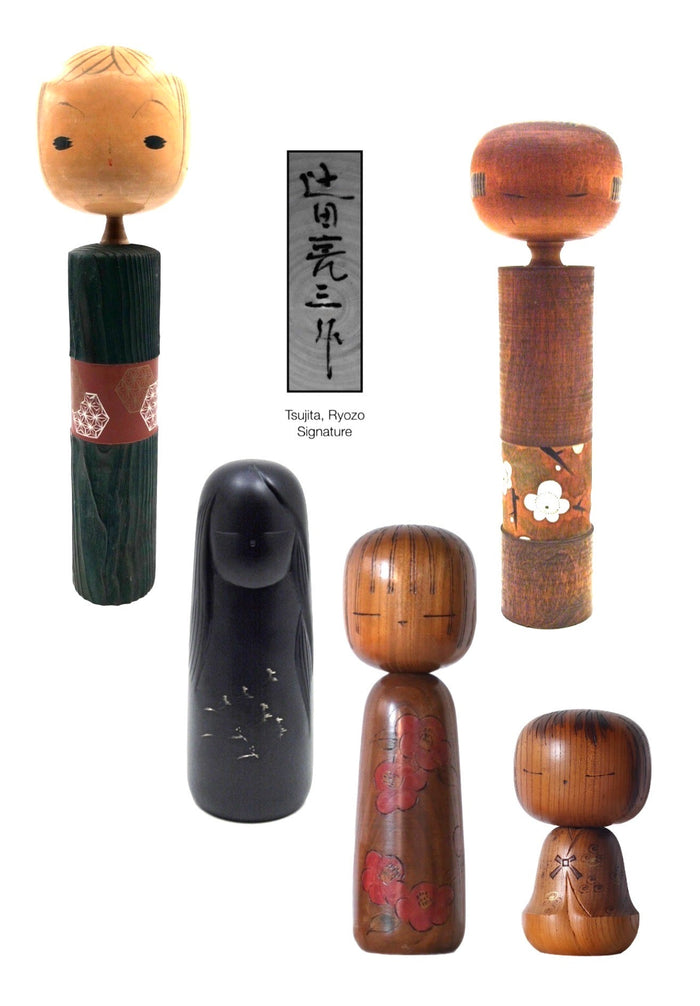

Vintage Japanese Sosaku Kokeshi Entitled, “Hemp Girl | Henpugāru” by Tsujita, Ryozo
Dimensions: 15”h
Tsujita-san began making Sosaku dolls in 1961 in his hometown of Odawara, where he resided until his death. A multi-award winner, he won the coveted Prime Minister’s Award in 1981. He was one of fifty, (50), local Sosaku artists featured in a small museum in nearby Hakone, where this Kokeshi was purchased before it permanently closed.
This piece, entitled: Aki, has an unusual treatment, with the lathe-turned head perched on top of a separate tapered neck, and a body made from one solid piece of dogwood, (mizuki). The head incorporates meticulously rendered grey hair, which contrasts with the light-colored base and the black-textured body. The artist took advantage of the natural grooved wood while being turned and then stained it black to add to its elegance. The Obi, in turn, is inset and painted with an undercoat of brick/tawny color, with hemp, (Asa) motif, in silver and gold enamel. (In early times, “asa” was an important source of cloth, and hemp leaves themselves formed the basis of a variety of hemp patterns, as shown in this beautiful motif). History tells us that the ‘God of Hemp’ is revered at Oasahiko Shrine in Tokushima, Japan. The piece is hand-inscribed in gold with the artist’s name on the back of the Obi.
The piece is published in Sosaku Kokeshi: Celebrating the Major Artists of the Creative Movement in 2022. For more information on this artist go to the following link: https://mingeiarts.com/collections/artisan-woodworker-tsujita-ryozo-1923-d.
Condition: Excellent, meaning that the piece retains its original craft/workmanship, showing a wonderful, developed patina commensurate with age, which suggests a degree of wear that corresponds to its vintage, and is void of damage, cracks, breakage, or repairs. This doll meets all the standards of the collectible Japanese Sosaku Kokeshi.

Artisan
Woodworker: Tsujita, Ryozo
1923-D
Biographical History:
Born in Odawara City, Tsujita-san was drafted into the military during WWII, and was held captive in a Siberian Labor Camp in the Soviet Union until sometime in the late 1950s. Attempting to recover his lost youth, perhaps, Ryozo began making Sosaku dolls in 1959 inspired by the woodwork of Hakone craftsmen. He opened his studio and practiced his woodworking arts in his hometown of Odawara, where he began to make Kokeshi in 1963, an effort to make up for the loss of his childhood, and where he resided until his death. He was a member of the Modern Kokeshi Craft Artist Association and was a member of the Handicraft Society. A multi-award winner, he won the coveted Prime Minister’s Award in 1981. He is one of fifty, (50), local Sosaku artists featured in a small museum in nearby Hakone.
Collector's note – descriptive qualities, standard characteristics & ornamentation styles:
Many of his pieces are differently treated, with the natural contrasting head, and the natural grooved and stained body. He illustrates obi, inset into the doll with a hemp motif, (In early times, “asa” was an important source of cloth, and hemp leaves formed the basis of a variety of hemp patterns). History tells us that the ‘God of Hemp’ is revered at Oasahiko Shrine in Tokushima. He also broke the tradition of one turned and undulating form and began to make dolls using multiple bulbous parts that compose the body and head, utilizing different woods to express the desired detail. He additionally renders spring with cherry blossoms, wheat, trees, and stars to give character to his dolls. He seems to enjoy the rendering of long flowing unbound hair, (taregami), and details such as the inlay of silver motifs on the body. And finally it is unusual to see a doll made of three bulbous forms that compose the body and head, utilizing different woods to express the desired detail.
Explore & Learn More about Woodworker: Tsujita, Ryozo